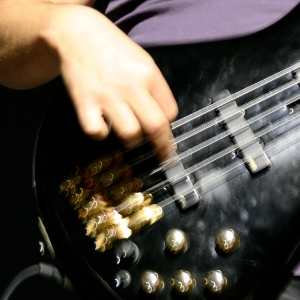There is little that proves more daunting for young bass players than realizing just how physically demanding it is to play bass. As novices watching our favorite bassists on video we think, “That doesn’t look so hard! I can do that!”
Unfortunately, it turns out to be harder than it looks. Here’s why:
The muscles that move your hands and fingers across the neck and strings are rarely used for other tasks.
The fine motor skills needed to play a stringed instrument require that the small muscles of the hands be strengthened.
So when you take up the bass, you’re like a baby learning to walk: Not only do you have no idea of what you’re doing, you don’t even have the muscles to do it.
But all is not lost! Time spent practicing is rapidly rewarded in the early stages of learning an instrument. And the electric bass is not as difficult to get a sound from as many other instruments (provided of course, that you have an amplifier!).
In struggling simply to get out the notes, though, it’s easy to neglect developing these small muscles. The result can be a great deal of wasted energy and motion, limiting one’s technique. So here are some of the do’s and don’t’s of hand position (the advice here is for righties; if you’re left-handed, adjust accordingly):
Bass guitar finger position
- Keep the end of the thumb of your left hand in the middle of the back of the bass neck
- Keep your left thumb perpendicular to the neck
- When reaching for notes, don’t let your thumb go parallel to the neck; shift position instead
- Use your left thumb as a pivot, keeping your elbow out from your body so that it can swing back and forth freely
- Curve the fingers of your left hand out over the neck to reach notes on the thicker strings; as your thumb pivots
- Play the notes on the thinner strings with your fingers flattened more against the neck, your elbow pulled back, and your left thumb standing almost out straight from the neck
- If you’re playing with the fingers of your right hand, point them slightly back toward the bridge so that the two fingers attack the string with about the same amount of flesh
- Keep the fingers of your right hand fairly straight, with just a slight bend at the joints
- Don’t pluck the strings; make a kind of walking motion with the index and middle fingers of your right hand
Finally, don’t think that just because this or that famous rock star does something means that it’s good technique. Take time to observe the performances of the bassists in the trenches, the ones backing up the stars. Where does she place her hands? How high or low does she wear the bass?
By paying attention to the relation of your body to your bass, you’ll give yourself lots of room for musical growth – without the bad habits that limit your expression and lead to pain later on.

